(as told by the Federal Reserve)
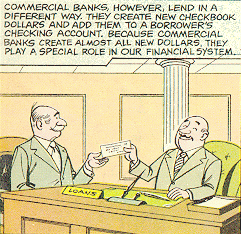 Rising debts and increasing bankruptcies are the result of Congress suspending the FREE coinage of metals – INTO MONEY – and switching us to bank credits as our medium of exchange. These acts converted our nation from a wealth monetary system, where people created money for society’s benefit though the fruits of their labor to a monetary system where now all new money is loaned in circulation as an interest bearing debt since this system only creates the principal and never the interest the debt is always greater than the money supply. This fraudulently created debt forces American citizens to borrow constantly so the system can function. Eventually the process becomes unworkable as society, mortgaged to the hilt, can no longer afford to borrow. The debt creates extreme stress for us as we struggle to meet impossible money obligations. The results are: a constant rise in the costs of living, layoffs, family breakdown, increased drug and alcohol use, and increase in crime and a general moral breakdown.”Money is created when loans are issued and debts incurred. Money is extinguished when loans are repaid.” — Congressional Research Service
Rising debts and increasing bankruptcies are the result of Congress suspending the FREE coinage of metals – INTO MONEY – and switching us to bank credits as our medium of exchange. These acts converted our nation from a wealth monetary system, where people created money for society’s benefit though the fruits of their labor to a monetary system where now all new money is loaned in circulation as an interest bearing debt since this system only creates the principal and never the interest the debt is always greater than the money supply. This fraudulently created debt forces American citizens to borrow constantly so the system can function. Eventually the process becomes unworkable as society, mortgaged to the hilt, can no longer afford to borrow. The debt creates extreme stress for us as we struggle to meet impossible money obligations. The results are: a constant rise in the costs of living, layoffs, family breakdown, increased drug and alcohol use, and increase in crime and a general moral breakdown.”Money is created when loans are issued and debts incurred. Money is extinguished when loans are repaid.” — Congressional Research Service
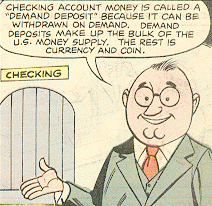 * If the money supply is to be increased, money must be created. The Federal Reserve Board (or “the Fed” as it is often called) has several ways of allowing money to be created, but the actual creation of money always involves the extension of credit by private commercial banks.
* If the money supply is to be increased, money must be created. The Federal Reserve Board (or “the Fed” as it is often called) has several ways of allowing money to be created, but the actual creation of money always involves the extension of credit by private commercial banks.
* In both the goldsmith’s practice and in modern banking, new money is created by offering loans to customers. A private commercial bank which has just received extra reserves from the Fed (by borrowing reserves for example) can make roughly six dollars in loans for every one dollar in reserves it obtains from the Fed.
*How does it get six dollars from one dollar? It simply makes book entries for its loan customers saying you have a deposit of six dollars with us.”
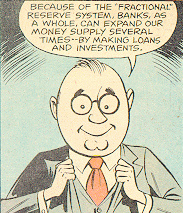
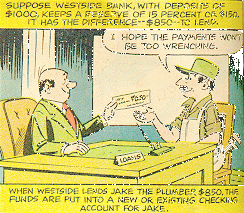
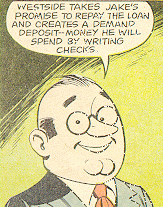
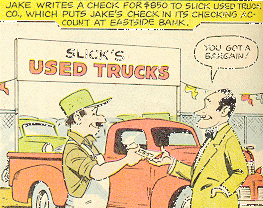 * You may want to know whether the bank is the one getting the benefit of the new money, since the bank owns the new money while the customer has merely borrowed the money. The bank does indeed get the benefit of the new money. (The interest or the liened property.)
* You may want to know whether the bank is the one getting the benefit of the new money, since the bank owns the new money while the customer has merely borrowed the money. The bank does indeed get the benefit of the new money. (The interest or the liened property.)
* “…Money for paying interest on borrowed money comes from the same source as other money comes from….”
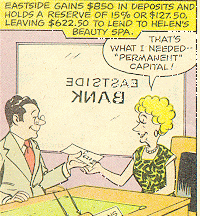
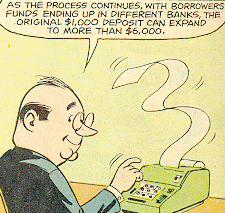
*at 10% A.P.R. Total Debt of $6600 The Debt is always greater
than the money supply!
* Sources:
Russell L. Munk, Assistant General Counsel, U.S. Treasury.
Cartoons:Federal Reserve Bank of New York – “The Story of Banks”


